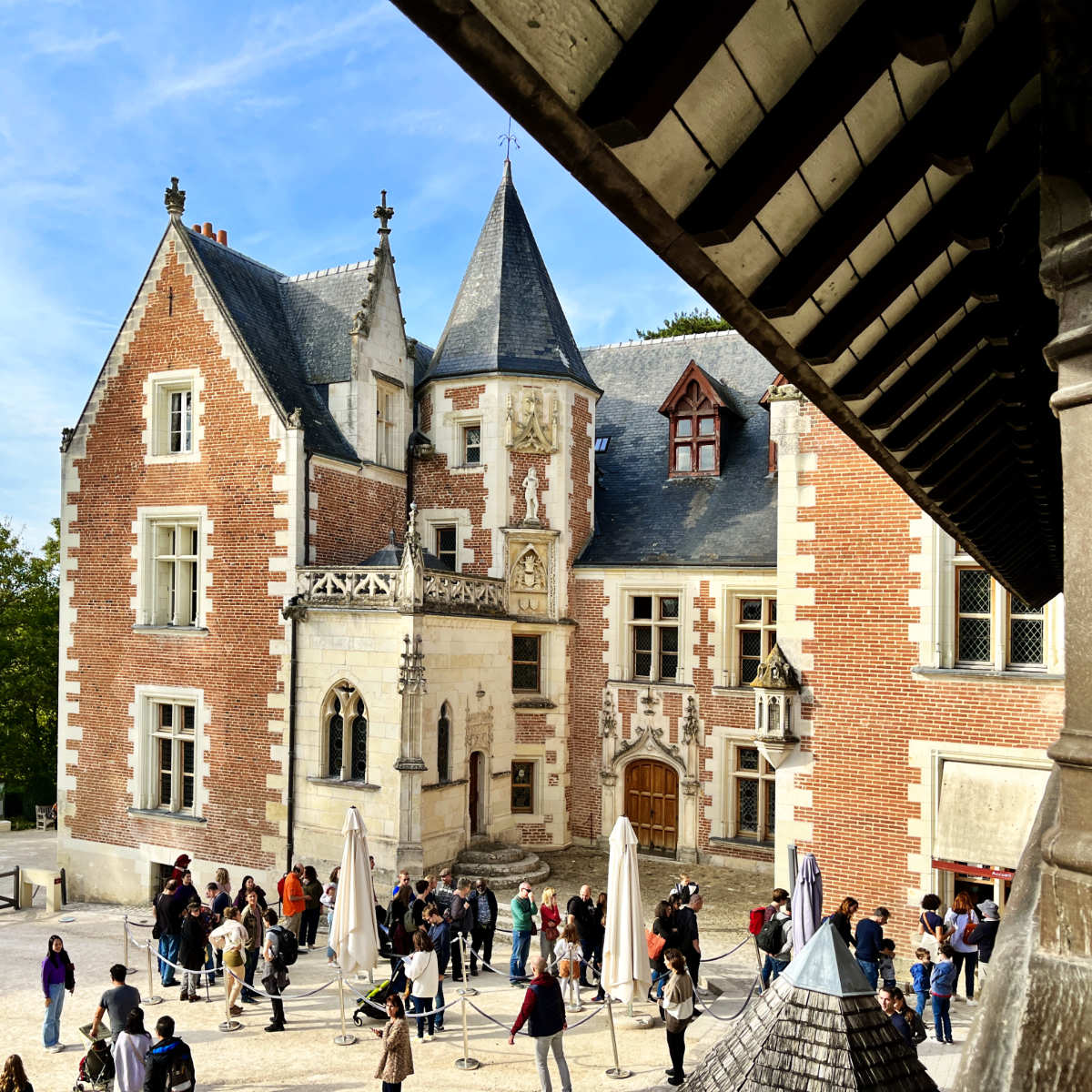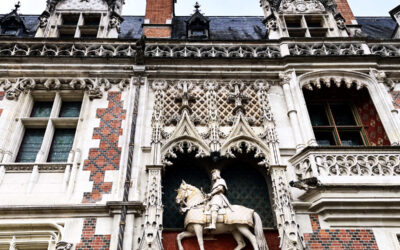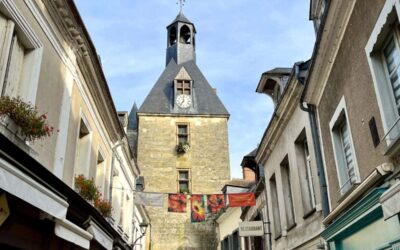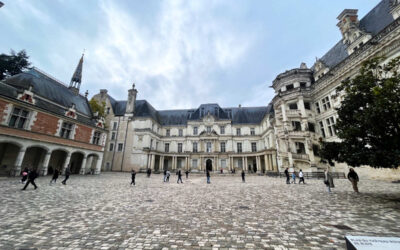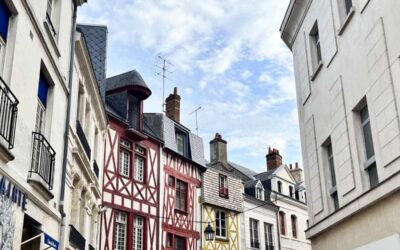One of the most interesting châteaux in the Loire Valley in France is not a large royal castle, but rather a private manor house named Clos Lucé in the town of Amboise.
It is the former home of the legendary Leonardo da Vinci, where spent his final years after leaving his hometown of Florence in Italy. The château was used to host Da Vinci by King François 1er as he himself was based about a 5 minute-walk away at the nearby Château d’Amboise.
It is right next to the Loire river near other famous châteaux in the area like Château de Chenonceau, Château de Blois, Château de Chaumont, and Château de Cheverny, near the cities of Amboise and Blois. It is about 3 hours away from Paris, making it ideal for a day trip from the city.
Today, Clos Lucé is privately owned but has dedicated itself as a museum to the great Renaissance master Da Vinci. It has such an extensive exhibition on Da Vinci, that school fieldtrips come from all over France to admire his genius.
So let’s explore how the Italian Da Vinci ended up in France and his life at Clos Lucé, shall we? Allons-y!
Da Vinci in France
In the early 16th century, the King François 1er of France was also the (disputed) Duke of Milan. A collector of arts, he crossed paths with Leonardo da Vinci and came to know of his talents.
He invited Da Vinci to move to France and offered to become his benefactor. It was an offer that Da Vinci couldn’t refuse. Da Vinci moved to France at the age of 64, leaving Italy in exile in 1515.
He arrived with chests full of notes and sketchbooks, along with 3 of his most famous paintings, the Mona Lisa, Virgin and Child with St. Anne and St. John the Baptist.
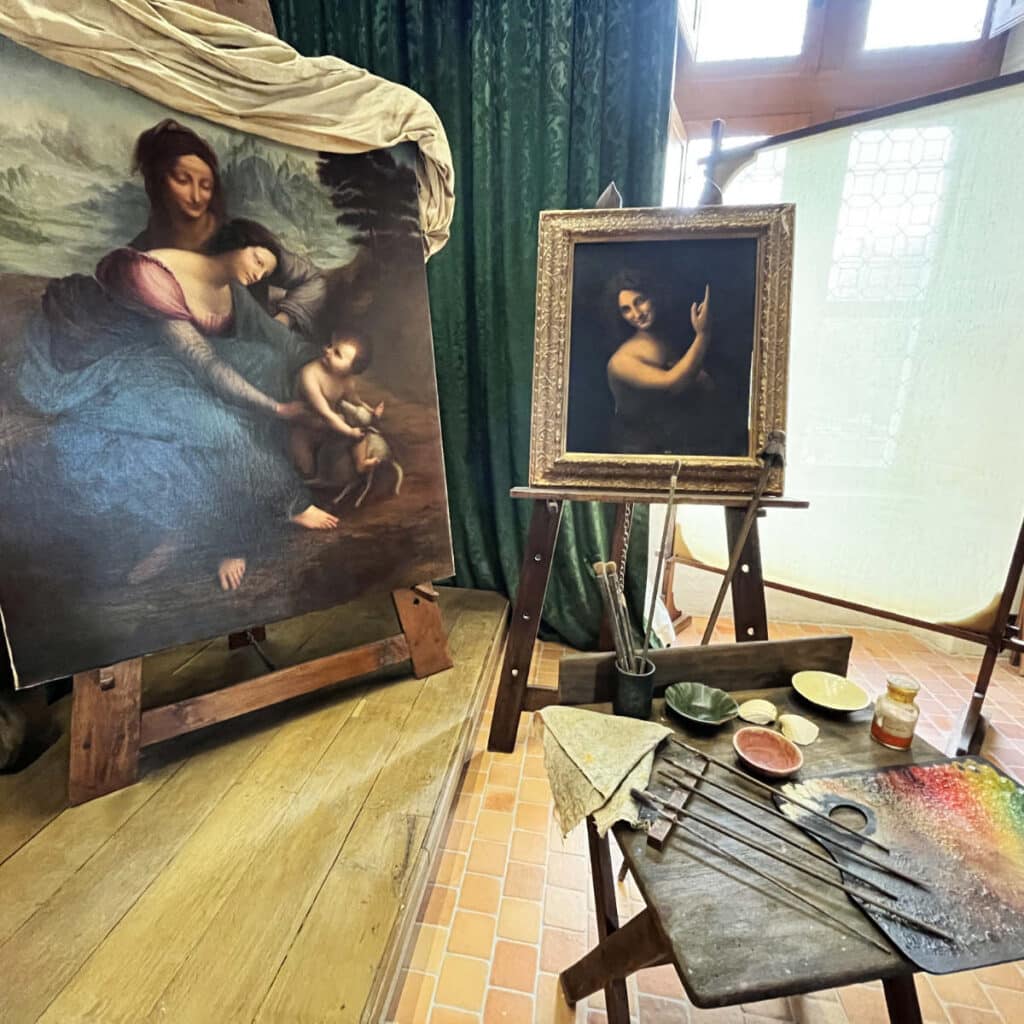
François Ier put him up at the Château de Clos Lucé in Amboise and gave him a rich allowance to continue his work. Clos Lucé had the benefit of being just yards away from François’s own home at the Château d’Amboise.
It is said that there was even a secret passage between the two châteaux so that François could visit Da Vinci without facing the elements.
Da Vinci died in 1519 at the age of 67 in Amboise, possibly of a stroke. He was buried in the nearby Saint-Florentin collegiate church, in accordance with his last wishes. (It was significantly damaged over time, and his tombstone has now disappeared.)
Upon his death 3 years later, much of Da Vinci’s work became the property of the French King. This is why many of those famous works are conserved in the Musée du Louvre, with his sketchbooks in vaults owned by the French government.
Inside the Château
In Clos Lucé, the tour starts upstairs where you can see the bedroom where Leonardo da Vinci slept in for the 4 years that he lived here. Legend has it that he is purported to have died in this room in the arms of François I, although that seems to be a flight of fancy.
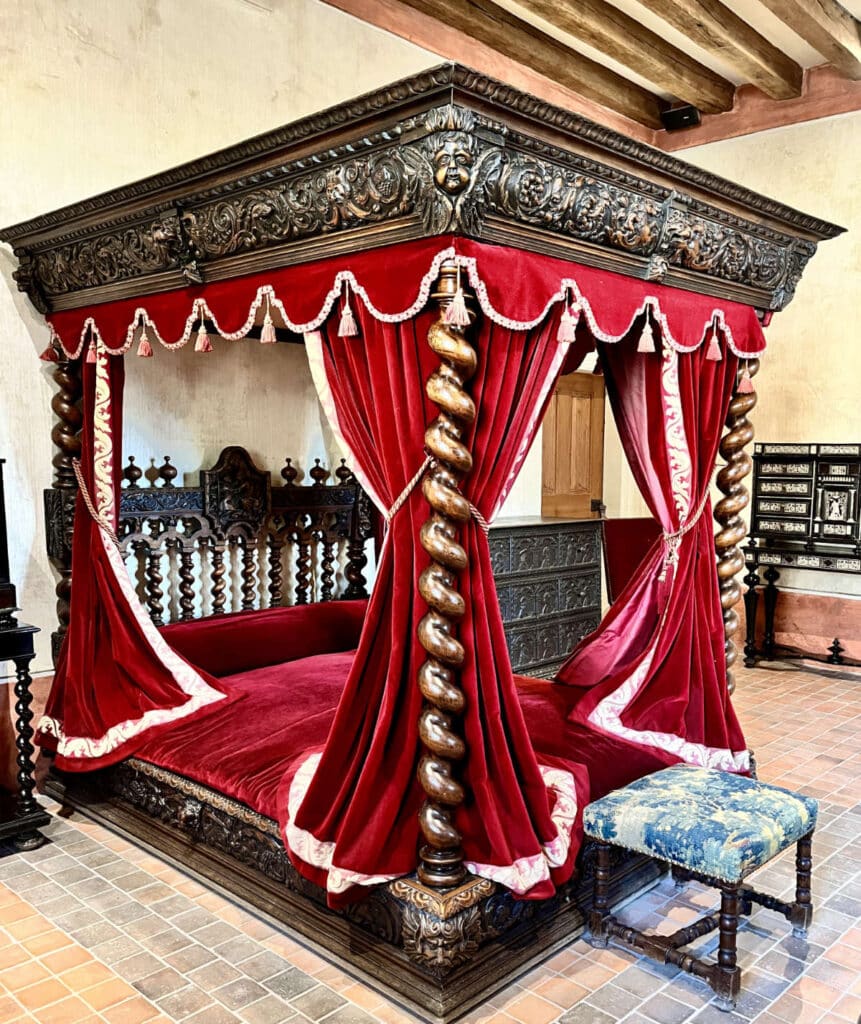
Next to Da Vinci’s bedroom is also a bedroom dedicated to François 1er’s elder sister Marguarite who also lived at Clos Lucé (although not at the same time as Da Vinci.)
On the ground floor of Clos Lucé you can also see his painting workshop and office, with papers and sketches scattered around as he might have kept them. The tour also leads to the kitchens and a small chapel where Leonardo might have prayed.
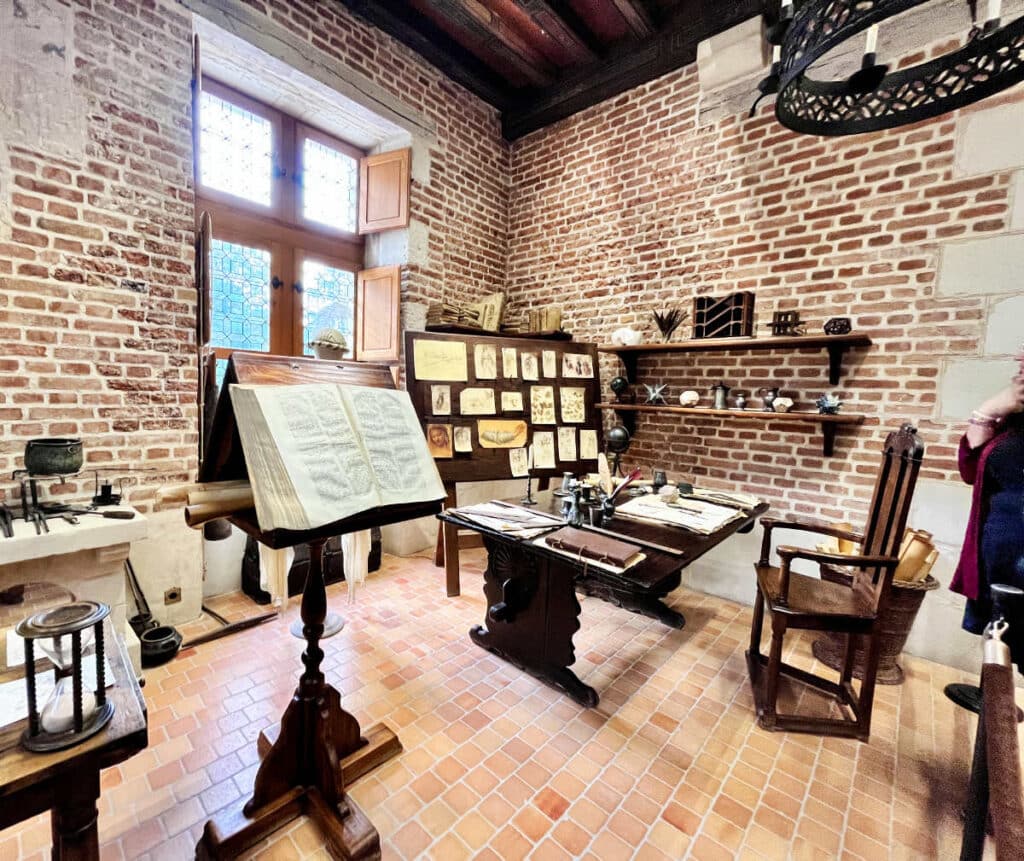
But the best parts of Clos Lucé are in the basement and the gardens. Using Da Vinci’s sketchbooks, model replicas of engineering projects have been brought to life in miniature, with larger versions of the mockups placed in the gardens.
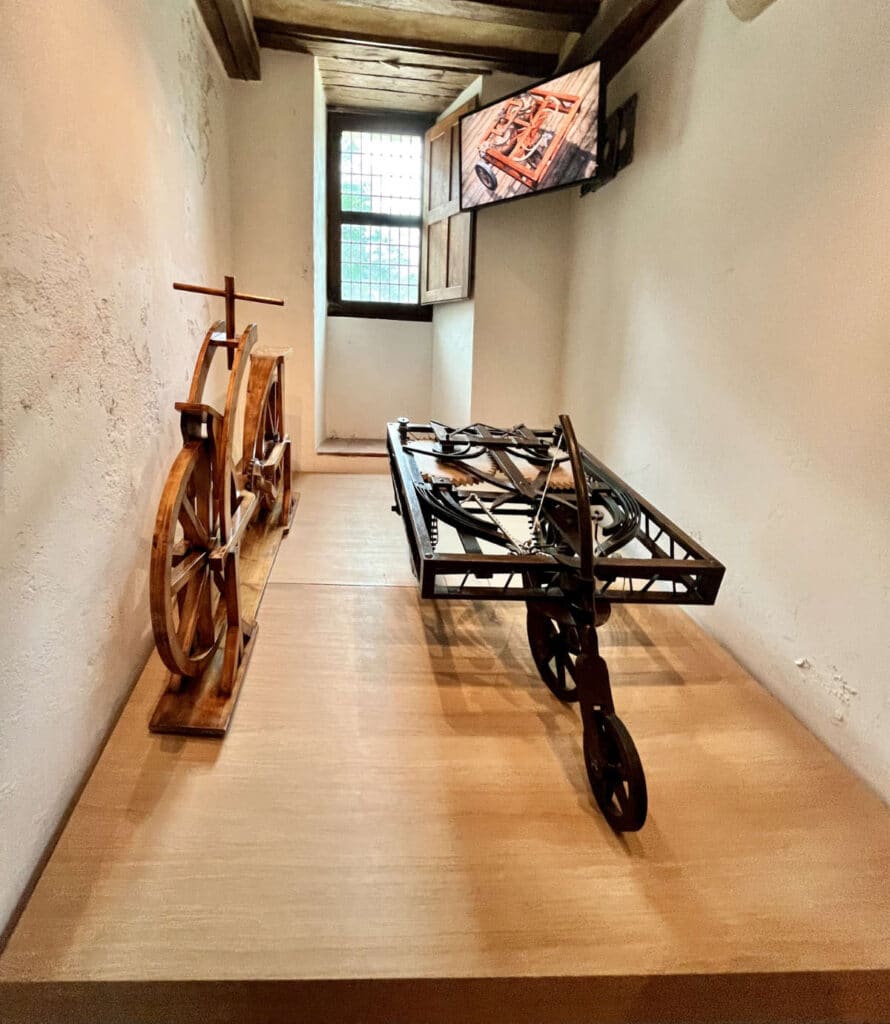
The Gardens
Every nook and cranny of the large garden at Clos Lucé is covered with his designs that you can touch and admire. For children over the age of 8, there is also a quiz that they can fill out as they explore the gardens.
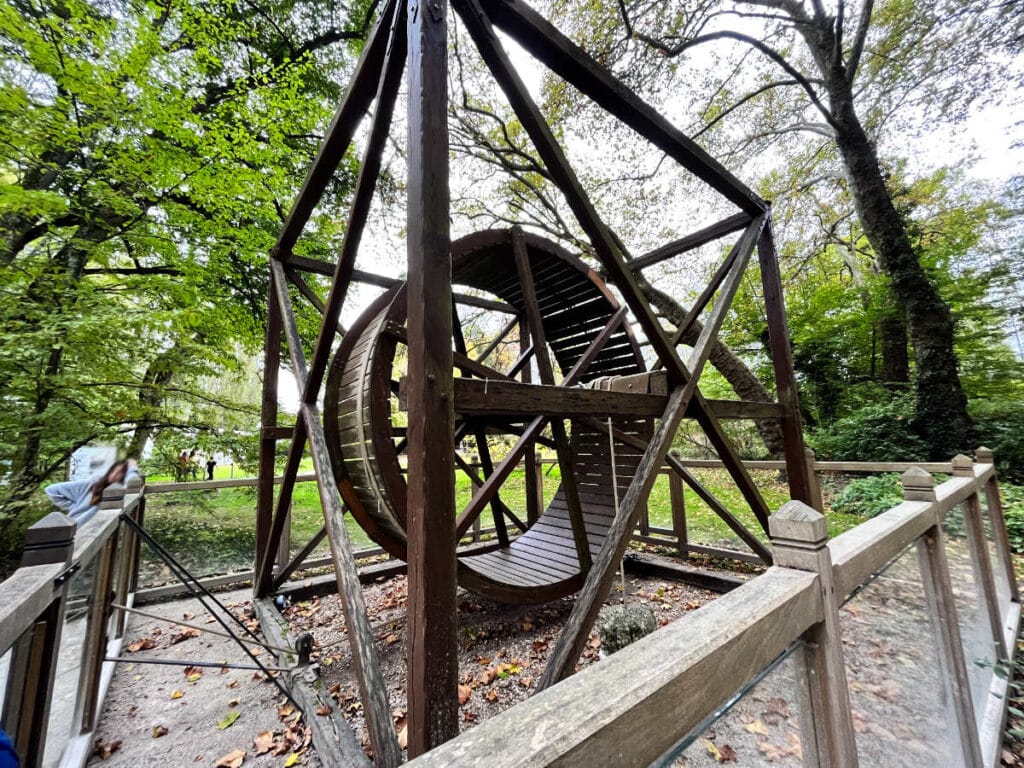
There are also expositions in different buildings on the grounds of Clos Lucé of Francois I and the Renaissance era. It makes for a wonderful afternoon for history and engineering buffs.
And in case you were thinking you may get hungry while exploring the château, there are a couple of cafés and tea rooms sprinkled around the gardens, along with a picnic area.
How to get to there?
Clos Lucé is quite accessible from Paris by car and by train. It takes approximately 2h15 to drive from Paris depending on traffic. By train, you can take a TER train from Paris’s Austerlitz station to Orlèans and then change trains to Amboise. The trip is approximately 2h30 minutes.
You can also take a tour that will have you there and back in style. There are several tours that combine with other châteaux in the area as well as vineyards to make the most of your day. You can see various tour options here.
Where should you stay?
The Clos Lucé is right next to the center of Amboise and the Château d’Amboise, so I recommend staying in the area. There are also several hotels around a handful of small bars and restaurants in this area for nightlife.
You can also choose to stay in nearby city of Tours or Blois.

If you enjoyed that article, you may like to read more about traveling around the Loire Valley. A bientôt!
